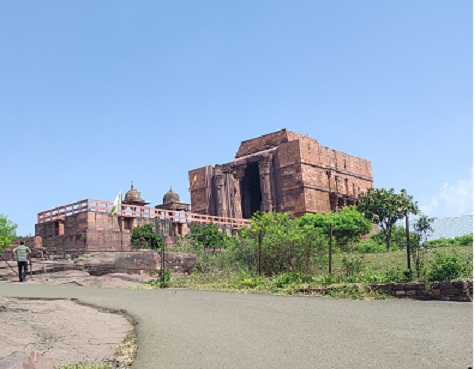When you are done with visiting the intriguing Bhimbetka Rock Shelters, a visit to the Bhojeshwar temple en route your return trip to Bhopal is mandatory. The temple dedicated to Lord Shiva was in a shamble and was in dilapidated state until recently, but now it is a major tourist destination thanks to the Archeological Survey Of India (ASI) which took up the restoration and conservation works in 2006-07. Visitors now often club Bhojeshwar temple with their Bhimbetka tour as both fall in the same route.
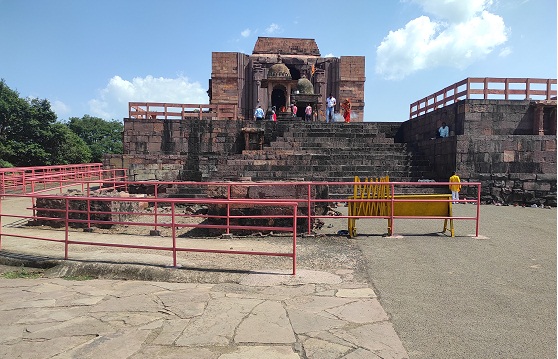
Bhojeshwar temple in Bhojpur village is about 20 kilometers from Bhimbetka, but you should avoid this short-cut road. My cab driver also decided against taking this road and rightly so as I later found the road hardly motorable. Thus we took the NH-46 towards Bhopal and drove till Mandideep from where we took a right turn towards Bhojpur. After travelling for about 11 kilometers we reached our destination.
As Bhojeshwar temple sits on a hillock, you catch a glimpse of the temple the moment you enter the village. The first glance of the temple is enough for you to surmise that it is an unfinished one. It doesn’t even look like a temple with the rectangular structure. This is enough for you to sense what is in store when you visit the temple site. So, let’s explore the temple and find out the answers to some of the questions that it poses to the visitors.
Must Read: A Walking Tour of Bhimbetka Rock Shelters and Prehistoric Cave Paintings
Post Contents
History of Bhojeshwar Temple
Raja Bhoja of the Paramara dynasty that ruled the region of Malwa during the 11th century built the Bhojeshwar temple dedicated to Shiva or Bhojeshwara. Raja Bhoja is thought to have been a great patron of art and architecture, and the temple he commissioned was intended to be a vast temple complex, but the temple was never finished.
According to archeologist Padmashree KK Muhammed who is credited with the restoration of the temple, Raja Bhoja built the temple in 1010, at the same time when Brihadishwara Temple in Tanjore was under construction. The king dreamed of the temple as an ambitious project ahead of its time..Muhammed claimed that one of the last stones set on the roof probably fell on the Shiva Linga and damaged it due to a mathematical error.
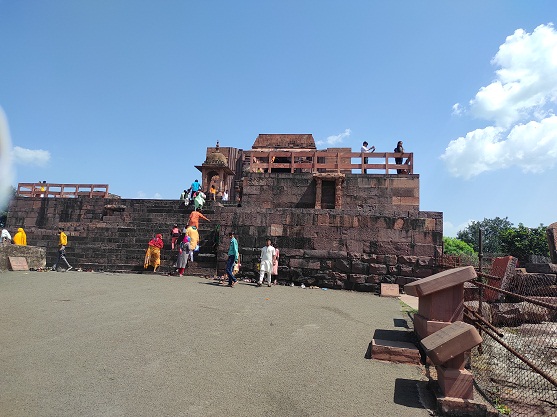
Raja Bhoja founded Bhojpur and is credited with building hundreds of temples, including 104 in his capital city of Dhar. Unfortunately, only the Bhojeshwar temple survives now and can be attributed to him. However, Raja Bhoja is credited for public works such as water reservoirs in addition to temples. Raja Bhoja was also more than simply a patron of art and architecture; he is credited with writing the Samaranganasutradhara treatise on architecture and sculpture.It is believed that he himself designed the Bhojeshwar Temple.
In a brilliant engineering feat, Raja Bhoja built a massive reservoir stretching 18.5 by 7.5 miles. The surrounding hills were cleverly utilised as natural boundaries, and a series of dams were built to form man-made lakes.
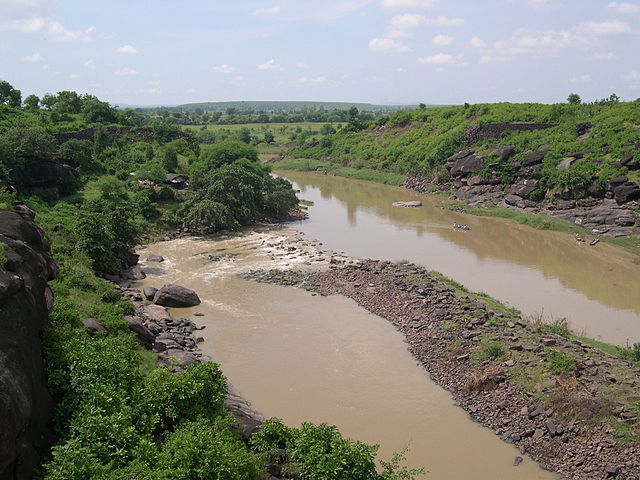
The Bhojeshwar Shiva temple was built on the banks of a man-made lake. This lasted around 400 years, until Sultan Hoshang Shah breached the walls of two dams and forced the lake’s waters to be drained. To the north of the temple, the ruins of a dam may still be seen. The earthen barrier over the Betwa river, which was topped with stone slabs, stood 98 feet tall and had a thickness of around 300 feet at the base, tapering to 164 feet at the top.
Historical evidence claims that given the massive scale of the temple, dams, and architectural homogeneity, these works could have been undertaken by a king who ruled over the region for an extended period of time. Similar architectural and construction traces have been discovered in the Bhojpur Jain temple, and an inscription there references Raja Bhoja. All of these facts point to Raja Bhoja constructing Bhojpur and pursuing his construction endeavours in the region.
You May Also Like: Ellora Cave Monuments: Spirit of co-existance and religious tolerance through rock architectures
Bhojeshwar Temple Architecture
As you walk up to the elevated mound, the Bhojeshwar temple springs a few surprises. First you find that the temple is west-facing which is quite unlikely for Hindu temples which are usually East-facing.
There is no mandapa attached to the sanctum, and the roof is rectilinear rather than the more common curvilinear domed tower. Three of the temple’s walls are completely plain on the outside, with only a few carvings on the entry wall that don’t appear to have been there initially. These irregularities have led some to think that the temple was a burial monument, but what we are actually seeing here is an ambitious architectural endeavour that was never completed.
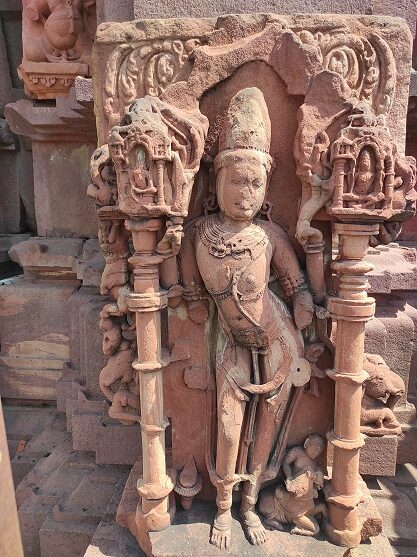
The temple stands on a platform 35m long, 25m wide, and 4.0m high. On the platform is a sanctum with a very huge lingam, 2.3m high and 5.4m in circumference. It sits atop a square platform with sides measuring 6.6 m. The lingam’s overall height, including the platform, exceeds12 m. This is said to be one of the largest lingam in India..
The sanctum’s doorway is 10 metres high. The entrance wall is adorned with sculptures of apsaras, ganas (Shiva’s attendants), and river goddesses. The temple walls are built of huge sandstone blocks with no windows.
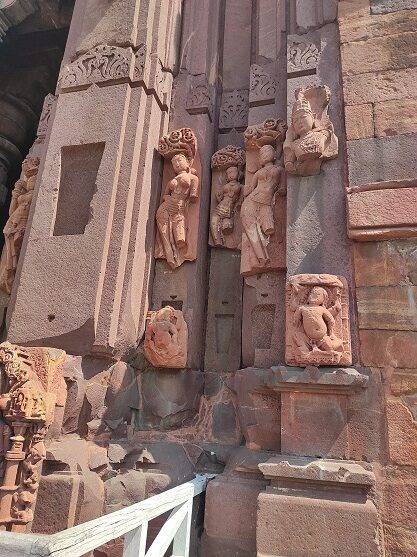
While the superstructure is incomplete, it is apparent that the shikhara (dome tower) was not supposed to be curvilinear. According to historian Kirit Mankodi, the shikhara was intended to have a low pyramid-shaped roof, similar to those found in mandapas. The incomplete but artistically carved dome is supported by four octagonal pillars, each 12.18 m high. Three pilasters are aligned with each pillar. These four pillars and twelve pilasters are akin to the navaranga-mandapas of other mediaeval temples, in which 16 pillars were arranged to form nine compartments.
On the north-eastern corner of the temple structure, the remains of a sloping ramp may be seen. The ramp is made of sandstone stones that measure 39 x 20 x 16 inches each.The slabs are now covered with soil and sand. The ramp itself is 91 metres long and rises to a height of 12 metres.
Related Article: Bodh Gaya travel: A self-enlighening journey into the land of Buddha
Why is Bhojeshwar Temple incomplete?
There are several theories that are attributed to the incompleteness of the temple. But the one that I found trustworthy is by archeologist KK Muhammed who is responsible for restoration and conservation of the monument. According to Muhammed, the temple’s construction was unable to withstand the weight of the roof, and a portion of it collapsed. The stunning Shivaling was harmed by the impact of the falling portion.
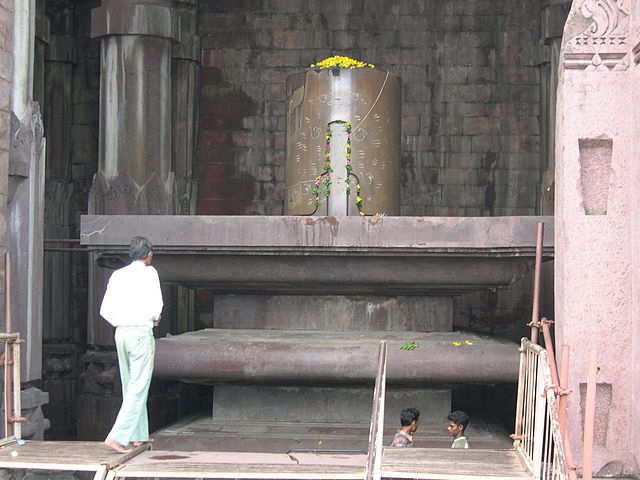
Damaged idols of Gods and Goddesses aren’t revered in temples, according to agamas (different Hindu spiritual practises). Hence, further construction of the temple was called off. As a result, it sat unfinished for a long time, with rain seeping in through the roof and onto the lingam.
Some archaeologists are of the opinion that there was a natural disaster that prevented the temple from being completed, or that he ran out of financial resources owing to war.Some other claim that Raja Bhoja shifted his focus to the construction Somnath temple which was attacked by the Mahmud of Gazni and never lived to see the Bhojeshwar temple completed.
Another theory that I believe the least is that the temple was intended to be built in a single day. Since, the huge structure couldn’t be completed, the construction was to be stopped after sunrise on the following day. Though highly improbable, the locals including the priests strongly back the “built in a single day” theory.
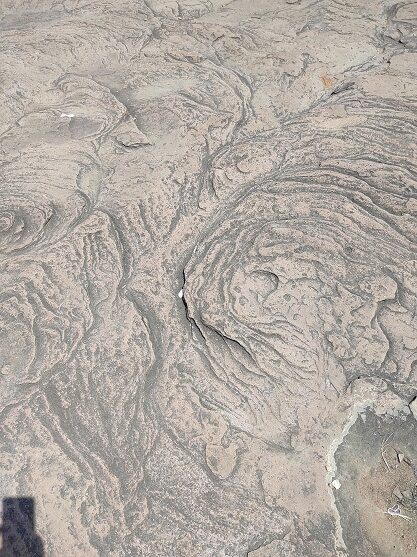
Mandatory Reading: Dancing Shiva of Chidambaram: Where science meets spirituality
Quarries and sketches on rock surface
While the Bhojpur temple is exceptional in that it was left unfinished, with a number of massive architectural pieces still located in the quarries where the stones were cut and fashioned. In addition, there are several architectural sketches engraved in the quarry’s flat surfaces depicting mouldings, pillars, and temple plans. The enormous earthen ramp behind the temple, which illustrates how mediaeval craftsmen raised the large pieces of stone into position, is also noteworthy. The designs and architectural components have been thoroughly studied, and a book on the subject has been brought out by the Indira Gandhi National Centre for the Arts.
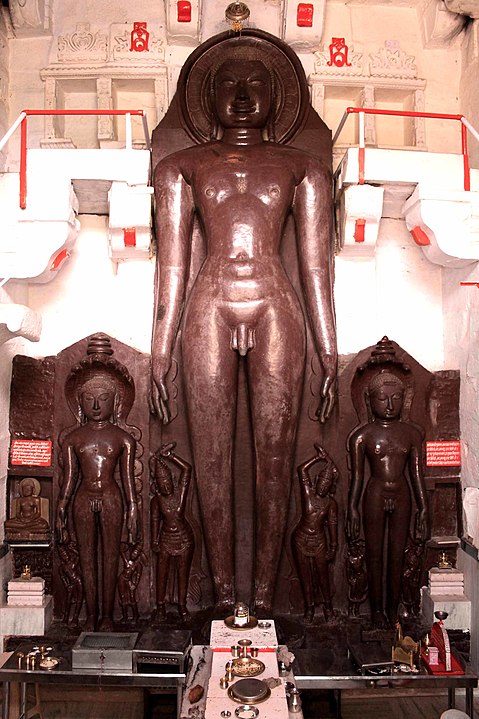
Jain Temple of Bhojpur
Like the Bhojeshwar temple, Bhojpur also boasts an unfinished Jain temple with a 6 metre tall statue of Bhagwan Shantinath and two statues of Bhagwan Parshvanath (left) and Bhagwan Suparshvanatha (right). The only epigraphic evidence that links Bhoja to the site is an inscription on the base of the central statues of Lord Shatinath referencing King Bhoja. The Suparshvaanath image on the left features an inscription dated samvat 1157 that names Naravarman, the nephew of King Bhoja, and adds that the two smaller idols were put by the grandson of Nemichandra of the Vemaka community, who had installed the main image in the centre.
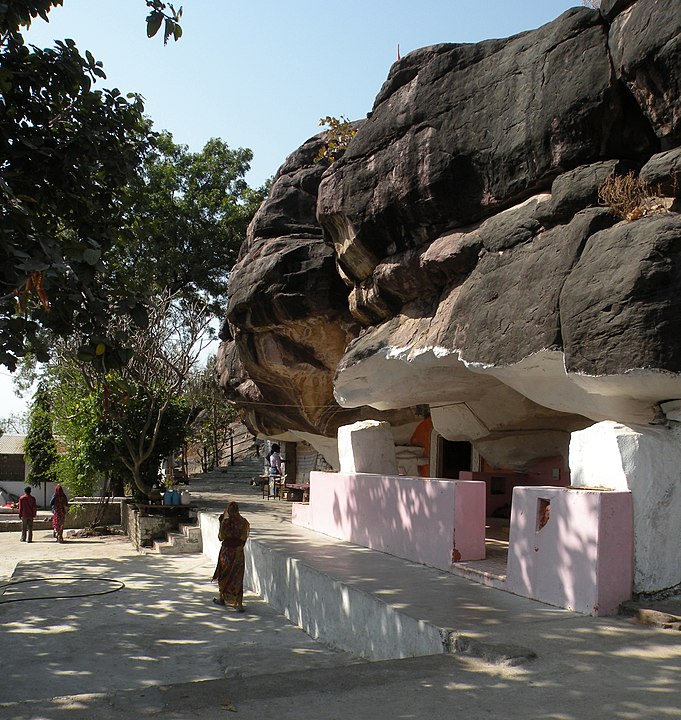
Recommended Read: A Day Trip to Pichavaram Mangrove Forests
Parvati Cave
Another attraction in Bhojpur that you must visit is the Parvati Cave. The place popularly known as Cave of Parvati is located at a some distance from the Bhojeshwar which is a classic rock shelter on the west bank of Betwa river. The cave has now been utilised by religious mendicants. A visit to the cave might transport you to the fantastic 11th century world, where you can see several old sculptures and building ruins. Because it is still a gathering place for religious mendicants, the atmosphere remains as dynamic as it was thousands of years ago. You can combine excursions to Bhojeshwar Temple, Rock Drawings And Quarries, Cave of Parvati, and the remnants of Bhoja’s Royal Palace to immerse yourself in this ancient world.
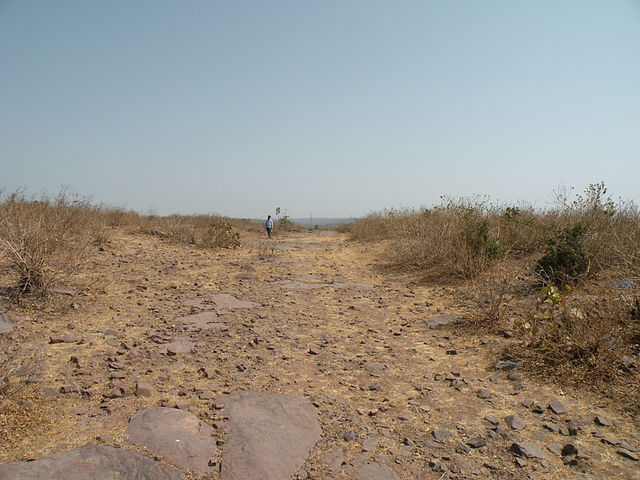
Ruins of Raja Bhoja’s palace
The ruins of Bhoja’s palace may be found on a low plateau above the Cave of Parvati, opposite the Bhojpur temple. Only the foundations of the structure survive. The complex is designed as a grid in a square, with a courtyard in the centre. It is positioned on an exact north-south axis as stipulated in the Samarganastradhra, an architectural book attributed to Bhoja. Among the many interesting features are incomplete carved blocks and graffiti inscribed on the granite floor. The latter offers game diagrams as well as a list of names dating from the eleventh century and beyond. The palace, being the only mediaeval structure of its kind in northern India.

